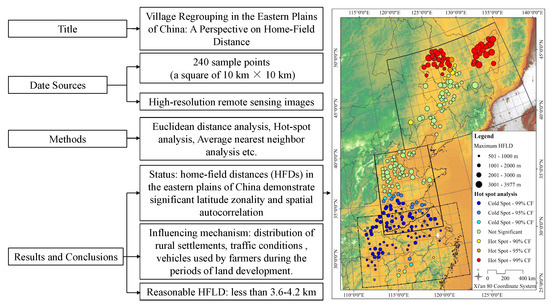Village Regrouping in the Eastern Plains of China: A Perspective on Home-Field Distance
Abstract
:1. Introduction
2. Materials and Methods
2.1. Study Area
2.2. Data Sources and Methods
2.2.1. Euclidean Distance Analysis
2.2.2. Spatial Autocorrelation Analysis
2.2.3. Hot Spot Analysis
2.2.4. Average Nearest Neighbor Analysis
2.2.5. Method of Calculating the Maximum HFLD Acceptable to Farmers
2.2.6. Calculation Method of the Maximum Service Scope and Number of Rural Settlements
2.2.7. Historical Analysis of Land Development in the EPC
3. Results
3.1. Distribution Pattern of HFLDs and Rural Settlements in the EPC
3.1.1. HFLDs in the EPC Demonstrate Significant Latitude Zonality
3.1.2. HFLDs in the EPC Demonstrate Significant Spatial Autocorrelation
3.1.3. Rural Settlements in the EPC Present Significant Spatial Differences
3.1.4. Rural Settlements in the EPC Demonstrate a Discrete Distribution
3.2. Mechanism of North-South Differences of HFLDs and Rural Settlements
3.3. Maximum HFLD Acceptable in the EPC
3.4. Number, Distribution Pattern, and Service Scope of Rural Settlements
4. Discussion
4.1. Comparison of This Study with Similar Studies
4.2. Implications for Policy-Making of Village Regrouping
4.3. Limitations and Prospects of This Study
5. Conclusions
Author Contributions
Funding
Conflicts of Interest
References
- Liu, Y.S.; Li, Y.H. Revitalize the world’s countryside. Nature 2017, 548, 275–277. [Google Scholar] [CrossRef] [PubMed] [Green Version]
- Elshof, H.; Haartsen, T.; van Wissen, L.J.G.; Mulder, C.H. The influence of village attractiveness on flows of movers in a declining rural region. J. Rural Stud. 2017, 56, 39–52. [Google Scholar] [CrossRef]
- Sun, H.; Liu, Y.S.; Xu, K.S. Hollow villages and rural restructuring in major rural regions of China: A case study of Yucheng City, Shandong Province. Chin. Geogr. Sci. 2011, 21, 354–363. [Google Scholar] [CrossRef] [Green Version]
- Liu, Y.; Cheng, S.K.; Ge, Q.S.; Yu, G.R. China Statistical Yearbook (2017); China Statistics Press: Beijing, China, 2017. [Google Scholar]
- Liu, Z.; Liu, S.H.; Jin, H.R.; Qi, W. Rural population change in China: Spatial differences, driving forces and policy implications. J. Rural Stud. 2017, 51, 189–197. [Google Scholar] [CrossRef]
- Smith, S.A. Town and Country Planning Act, 1947. Mod. Law Rev. 1948, 11, 72–81. [Google Scholar]
- Traphagan, J.W. Demographic Change and the Family in Japan’s Aging Society; State University of New York Press: New York, NY, USA, 2003. [Google Scholar]
- Saleh, A. Concept of village regrouping as an alternative strategy for sustainable micro regional development. In Urban Planning and Architectural Design for Sustainable Development; Naselli, F., Pollice, F., Amer, M.S., Eds.; Springer: Berlin, Germany, 2016; Volume 216, pp. 933–937. [Google Scholar]
- Sokoni, C.H. Home to field distance in western Bagamoyo, Tanzania: Lessons for rural development policy and practice. Utafiti 2011, 2, 86–98. [Google Scholar]
- Pius, N. State power, land-use planning, and local responses in Northwestern Zimbabwe, 1980s–1990s. Afr. Stud. Q. 2014, 14, 37–60. [Google Scholar]
- Happy, M.K. Malawi’s economic and development policy choices from 1964 to 1980: An epitome of ‘Pragmatic Unilateral Capitalism’. Nord. J. Afr. Stud. 2011, 2, 112–131. [Google Scholar]
- Macall, M.K. The significance of distance constraints in peasant farming systems with special reference to sub-Saharan Africa. Appl. Geogr. 1985, 4, 325–345. [Google Scholar] [CrossRef]
- Kassali, R.; Ayanwale, A.B.; Williams, S.B. Farm location and determinants of agricultural productivity in the Oke-Ogun Area of Oyo State, Nigeria. J. Sustain. Dev. Afr. 2009, 2, 1–19. [Google Scholar]
- Williams, T.O. Factors influencing manure application by farmers in semi-arid west Africa. Nutr. Cycl. Agroecosyst. 1999, 1, 15–22. [Google Scholar] [CrossRef]
- Liu, L. Labor location and agricultural land use in Jilin, China. Prof. Geogr. 2000, 1, 74–83. [Google Scholar] [CrossRef]
- Ganapathy, R.S. The political economy of rural energy planning in the third world. Rev. Radic. Political Economics 1983, 3, 83–95. [Google Scholar] [CrossRef]
- Li, X.D.; Yang, Y.; Yang, B.; Zhao, T.; Yu, Z.R. Layout optimization of rural settlements in mountainous areas based on farming radius analysis. Trans. Chin. Soc. Agric. Eng. 2018, 12, 267–273. [Google Scholar] [CrossRef]
- Berry, B.J.L.; Garrison, W.L. Recent developments of central place theory. Papers Reg. Sci. 2010, 4, 107–120. [Google Scholar] [CrossRef]
- Mulligan, G.F. Central place theory and its reemergence in regional science. Ann. Reg. Sci. 2012, 48, 405–431. [Google Scholar] [CrossRef]
- Hsu, W.T. Central Place Theory and City Size Distribution. Econ. J. 2012, 122, 903–932. [Google Scholar] [CrossRef]
- Liu, Y.S.; Long, H.L.; Chen, Y.F.; Wang, J.Y. China ‘s Rural Development Research Report: Rural Hollowing and Consolidation Strategy; China Science Press: Beijing, China, 2011. [Google Scholar]
- Tang, L.J.; Wang, D.Y.; Wang, L.L. Rational distribution of rural settlements based on farming radius: A case study in rural-urban construction land in Yiyuan County, Shandong Province. China Popul. Resour. Environ. 2014, 6, 59–64. [Google Scholar] [CrossRef]
- Yao, F.M.; Tang, Y.J.; Wang, P.J.; Zhang, J.H. Estimation of maize yield by using a process-based model and remote sensing data in the Northeast China Plain. Phys. Chem. Earth 2015, 87–88, 142–152. [Google Scholar] [CrossRef]
- Wang, X.Q.; Ledgard, S.; Luo, J.; Guo, Y.Q.; Zhao, Z.Q. Environmental impacts and resource use of milk production on the North China Plain, based on life cycle assessment. Sci. Total Environ. 2018, 1, 486–495. [Google Scholar] [CrossRef]
- Jiang, L.Z.; Ban, X.; Wang, X.L.; Cai, X.B. Assessment of Hydrologic Alterations Caused by the Three Gorges Dam in the Middle and Lower Reaches of Yangtze River, China. Water 2014, 6, 1419–1434. [Google Scholar] [CrossRef] [Green Version]
- Yao, F.M.; Liu, D.; Zhang, J.H.; Wang, P.J. Estimation of Rice Yield with a Process-Based Model and Remote Sensing Data in the Middle and Lower Reaches of Yangtze River of China. J. Indian Soc. Remote Sens. 2017, 45, 477–484. [Google Scholar] [CrossRef]
- Wang, Z.S.; Nie, K. Measuring Spatial Distribution Characteristics of Heavy Metal Contaminations in a Network-Constrained Environment: A Case Study in River Network of Daye, China. Sustainability 2017, 9, 11. [Google Scholar] [CrossRef]
- Moreira, N.J.M.; Duarte, L.T.; Lavor, C.; Torezzan, C. A novel low-rank matrix completion approach to estimate missing entries in Euclidean distance matrix. Comput. Appl. Math. 2018, 37, 4989–4999. [Google Scholar] [CrossRef]
- Miao, Z.H.; Chen, Y.; Zeng, X.Y.; Li, J. Integrating Spatial and Attribute Characteristics of Extended Voronoi Diagrams in Spatial Patterning Research: A Case Study of Wuhan City in China. ISPRS Int. Geo-Inf. 2016, 5, 19. [Google Scholar] [CrossRef]
- Cima, E.G.; Uribe-Opazo, M.A.; Johann, J.A.; da Rocha, W.F.; Dalposso, G.H. Analysis of spatial autocorrelation of grain production and agricultural storage in Parana. Eng. Agric. 2018, 38, 395–402. [Google Scholar] [CrossRef]
- Darand, M.; Dostkamyan, M.; Rehmanic, M.I.A. Spatial Autocorrelation Analysis of Extreme Precipitation in Iran. Russ. Meteorol. Hydrol. 2017, 42, 415–424. [Google Scholar] [CrossRef]
- Brown, T.T.; Wood, J.D.; Griffith, D.A. Using Spatial Autocorrelation Analysis to Guide Mixed Methods Survey Sample Design Decisions. J. Mix. Methods Res. 2017, 11, 394–414. [Google Scholar] [CrossRef]
- Gao, Y.; He, Q.S.; Liu, Y.L.; Zhang, L.Y.; Wang, H.F.; Cai, E.X. Imbalance in Spatial Accessibility to Primary and Secondary Schools in China: Guidance for Education Sustainability. Sustainability 2016, 8, 16. [Google Scholar] [CrossRef]
- Garcia, D.M.; Lee, J.; Keck, J.; Yang, P.; Guzzetta, R. Hot Spot Analysis of Water Main Failures in California. J. Am. Water Works Assoc. 2018, 110, E39–E49. [Google Scholar] [CrossRef]
- Zhao, H.B.; Ren, Z.B.; Tan, J.T. The Spatial Patterns of Land Surface Temperature and Its Impact Factors: Spatial Non-Stationarity and Scale Effects Based on a Geographically-Weighted Regression Model. Sustainability 2018, 10, 21. [Google Scholar] [CrossRef]
- Colak, H.E.; Memisoglu, T.; Erbas, Y.S.; Bediroglu, S. Hot spot analysis based on network spatial weights to determine spatial statistics of traffic accidents in Rize, Turkey. Arab. J. Geosci. 2018, 11, 11. [Google Scholar] [CrossRef]
- Rosell, M.; Fernandez-Recio, J. Hot-spot analysis for drug discovery targeting protein-protein interactions. Expert Opin. Drug Discov. 2018, 13, 327–338. [Google Scholar] [CrossRef] [PubMed]
- Gotoh, K.; Jodrey, W.S.; Tory, E.M. Average nearest-neighbour spacing in a random dispersion of equal spheres. Powder Technol. 1978, 21, 285–287. [Google Scholar] [CrossRef]
- He, X.F. Northern and Southern China: Regional Differences in Rural Areas; Social Sciences Academic Press: Beijing, China, 2017. [Google Scholar]
- Li, W.; Zhang, P.Y.; Song, Y.X. Analysis on Land Development and Causes in Northeast China during Qing Dynasty. Sci. Geogr. Sin. 2005, 1, 7–16. [Google Scholar] [CrossRef]
- Yan, W.Y.; Yin, Y.H. History of Agricultural Development in China; Tianjin Science and Technology Press: Tianjin, China, 1992. [Google Scholar]
- Huang, Z.Z. The Peasant Economy and Social Changes in North China; Law Press: Beijing, China, 2014. [Google Scholar]
- Huang, Z.Z. The Peasant Family and Rural Development in the Yangtze Delta; Law Press: Beijing, China, 2014. [Google Scholar]
- Wan, S.N.; Zhuang, H.F.; Chen, L.Z. China’s Yangtze River Basin Development History; Huangshan Publishing House: Hefei, China, 1997. [Google Scholar]
- Tao, Y.; Ge, Y.-S.; Yin, L. The practicability study of amalgamation of villages based on GIS analysis. Henan Sci. 2006, 5, 771–775. [Google Scholar] [CrossRef]
- Zhang, H.; Sui, H.J.; Su, H.; Shi, X.L.; Ma, X.P. Suitable farming radius and its influencing factors in rural residential areas in Heilongjiang Province. Trans. Chin. Soc. Agric. Eng. 2018, 11, 217–224. [Google Scholar] [CrossRef]
- Qiao, W.F.; Wu, J.G.; Zhang, X.L.; Ji, Y.Z.; Li, H.B. Optimization of spatial distribution of rural settlements at county scale based on analysis of farming radius. Resour. Environ. Yangze Basin 2013, 12, 1557–1563. [Google Scholar]
- Zhong, L.; Liu, P.F.; Wang, L.Z.; Wei, Z.Y.; Guan, H.Y.; Yu, Y.T. A Combination of Stop-and-Go and Electro-Tricycle Laser Scanning Systems for Rural Cadastral Surveys. ISPRS Int. Geo-Inf. 2016, 5, 18. [Google Scholar] [CrossRef]
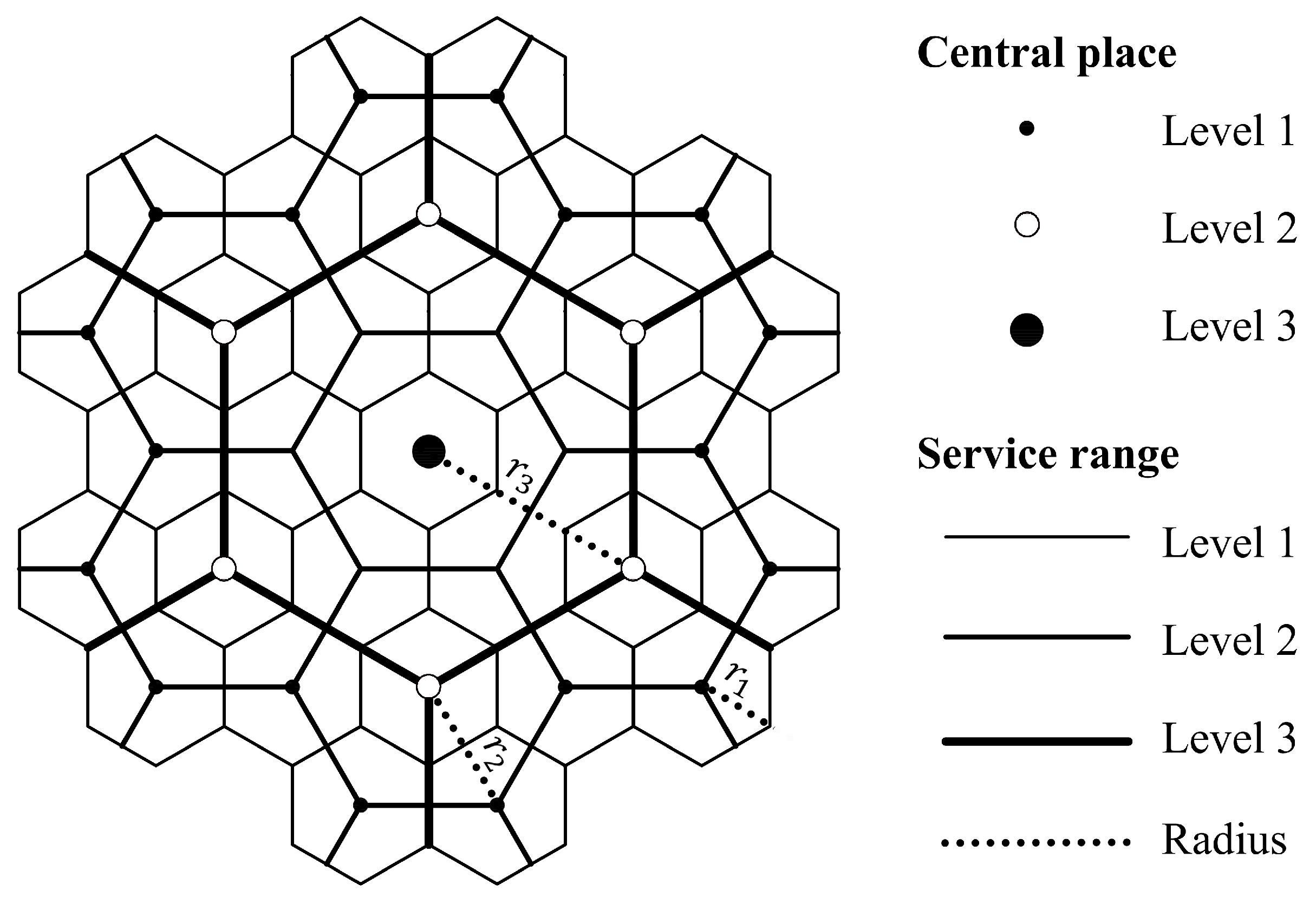
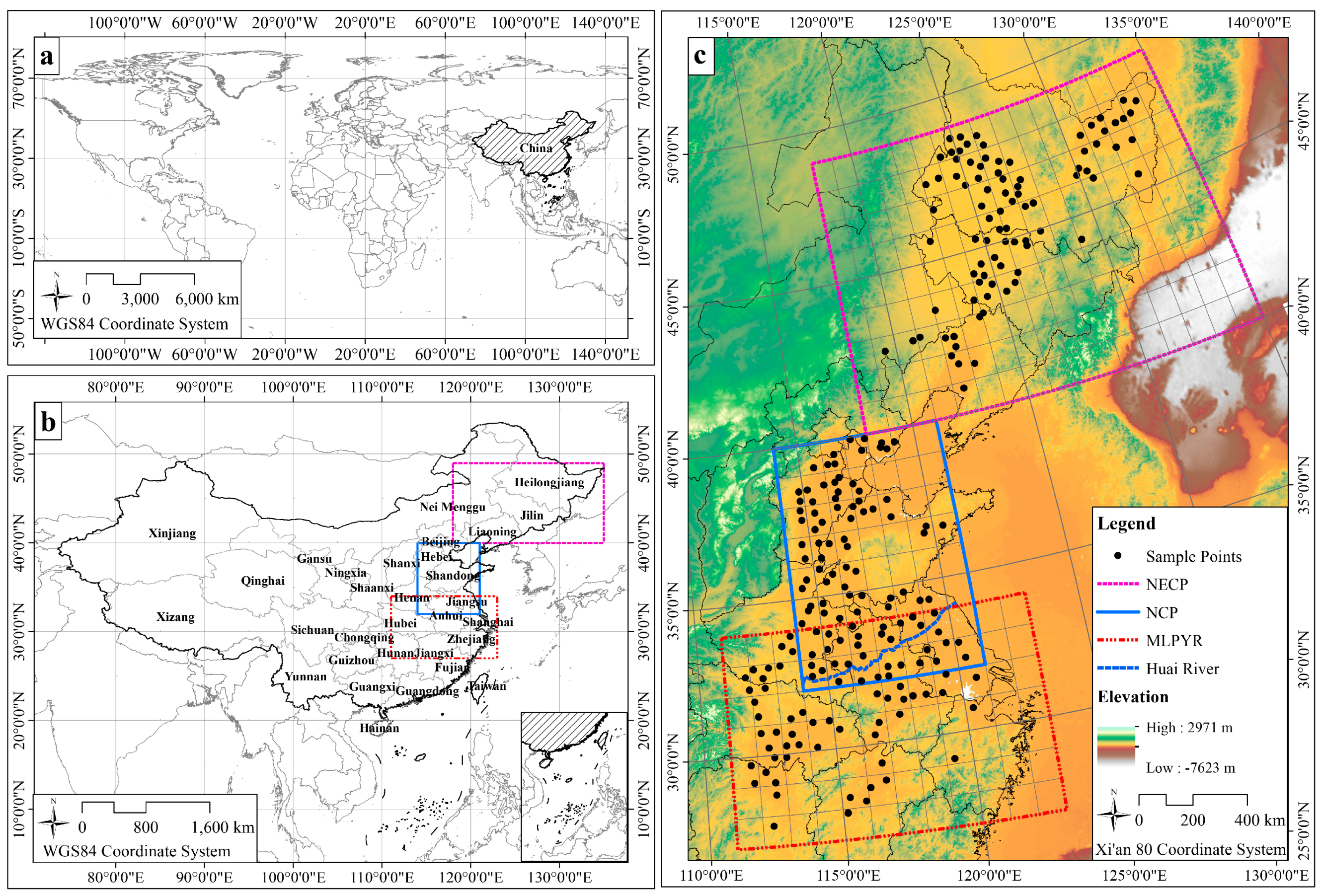
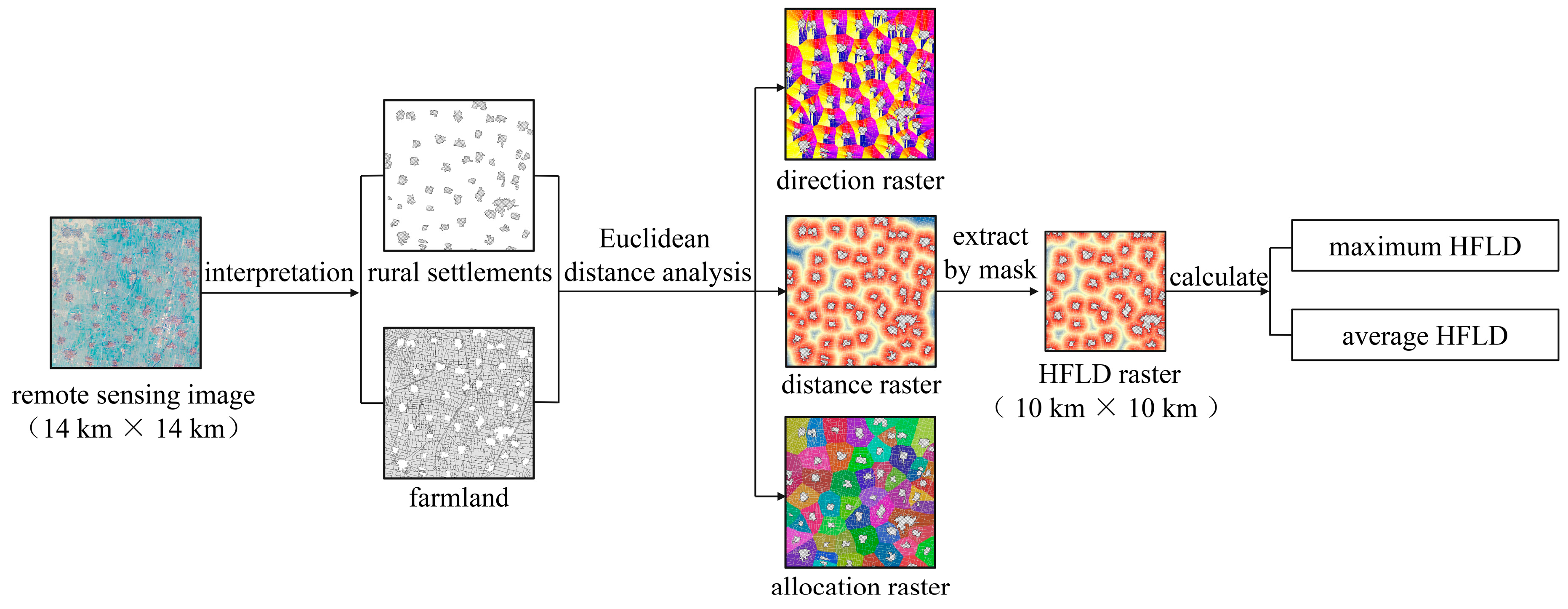

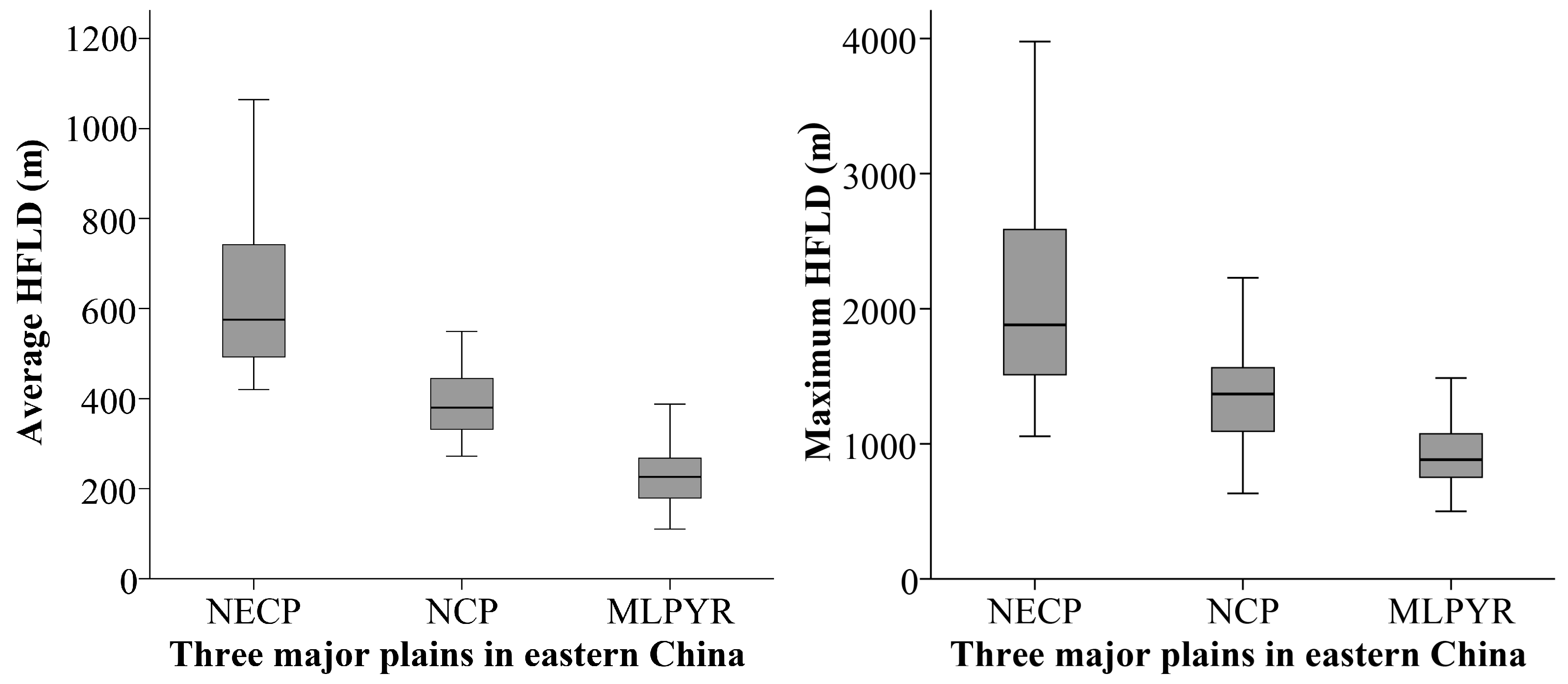
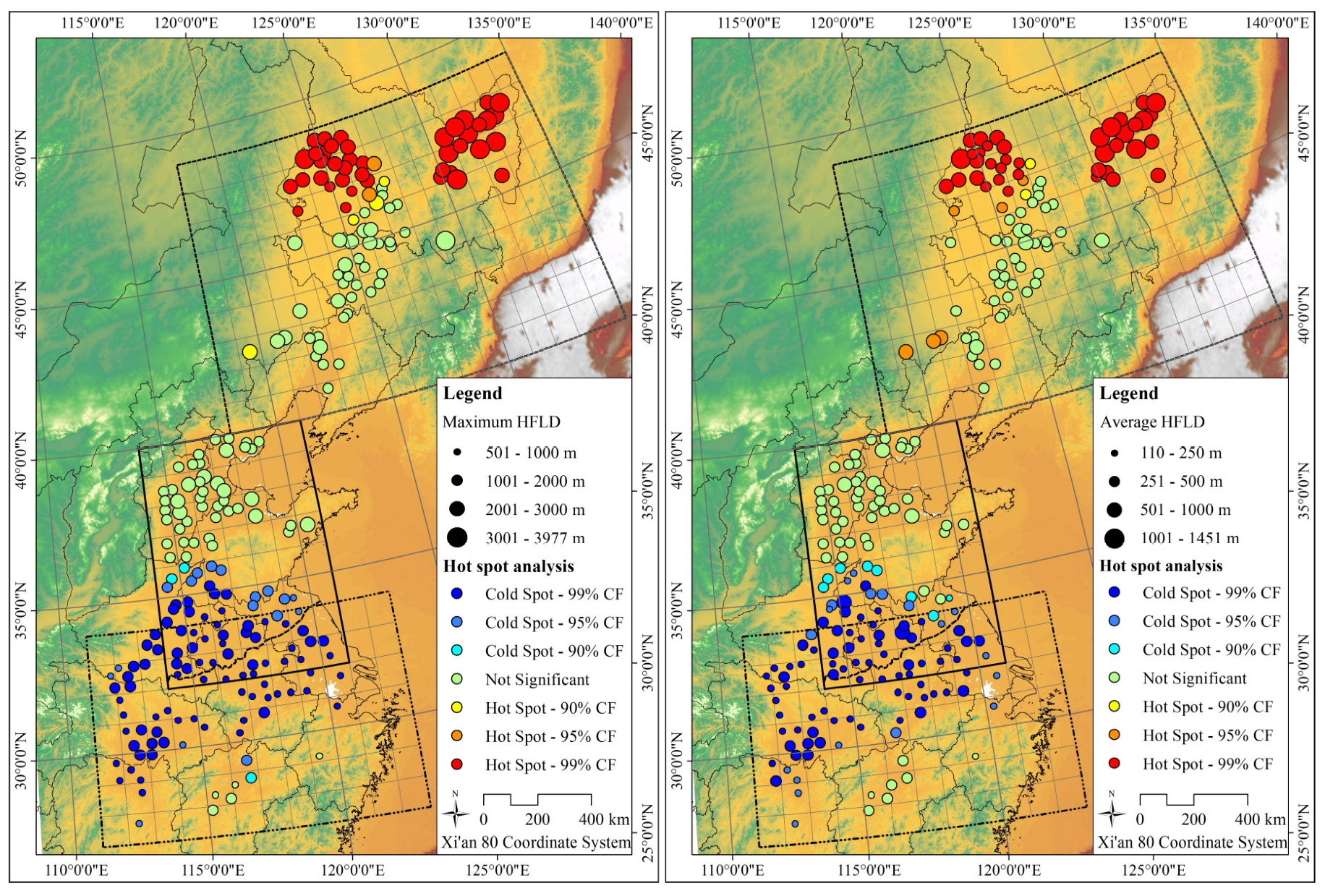
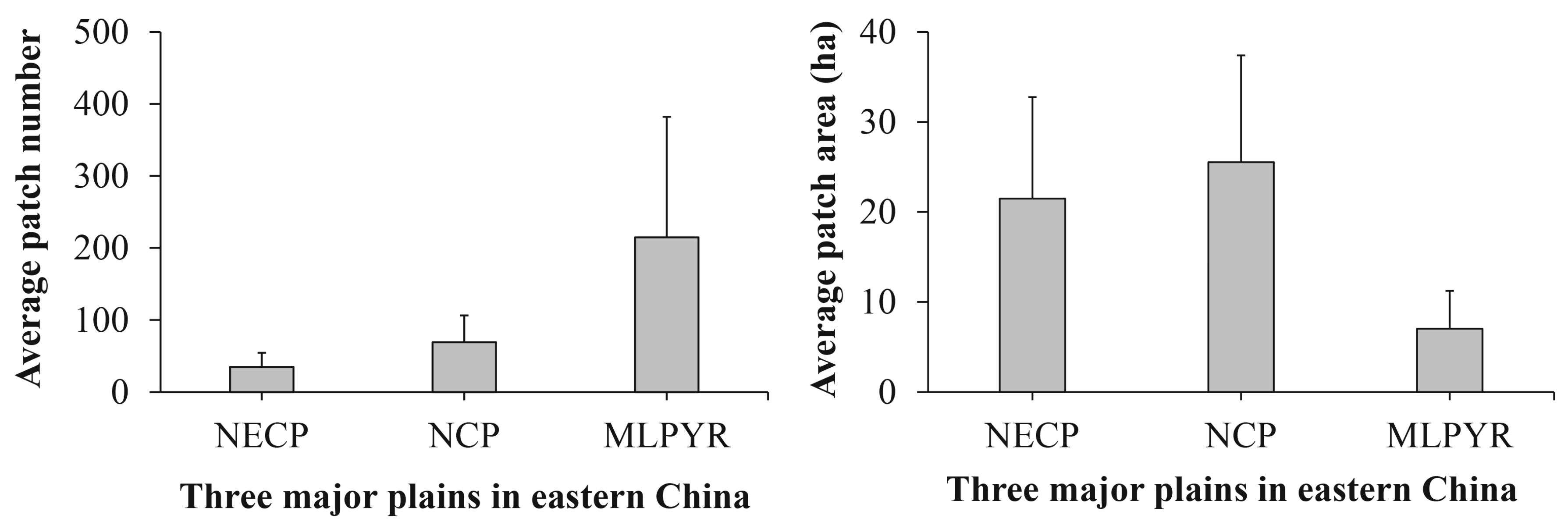
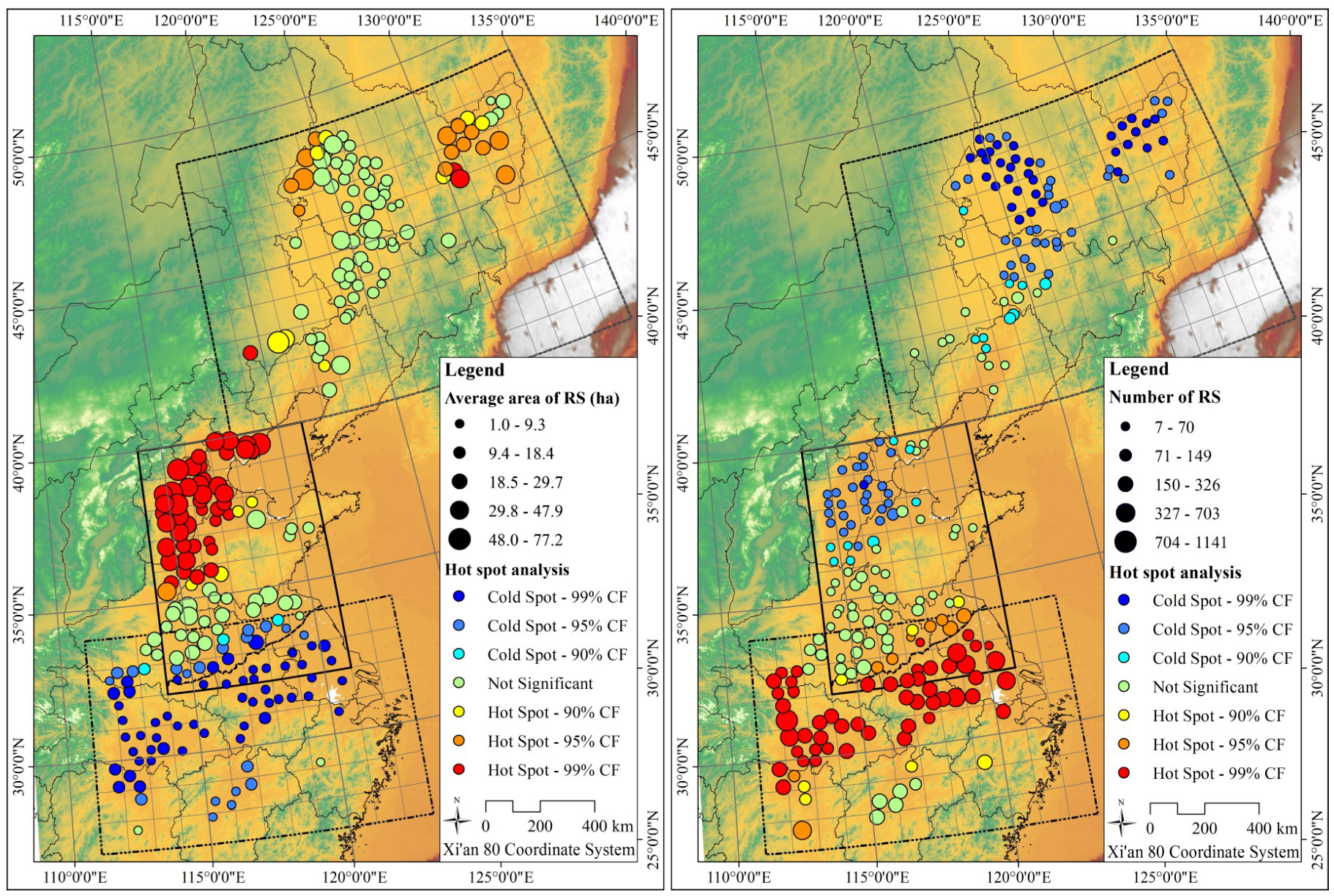
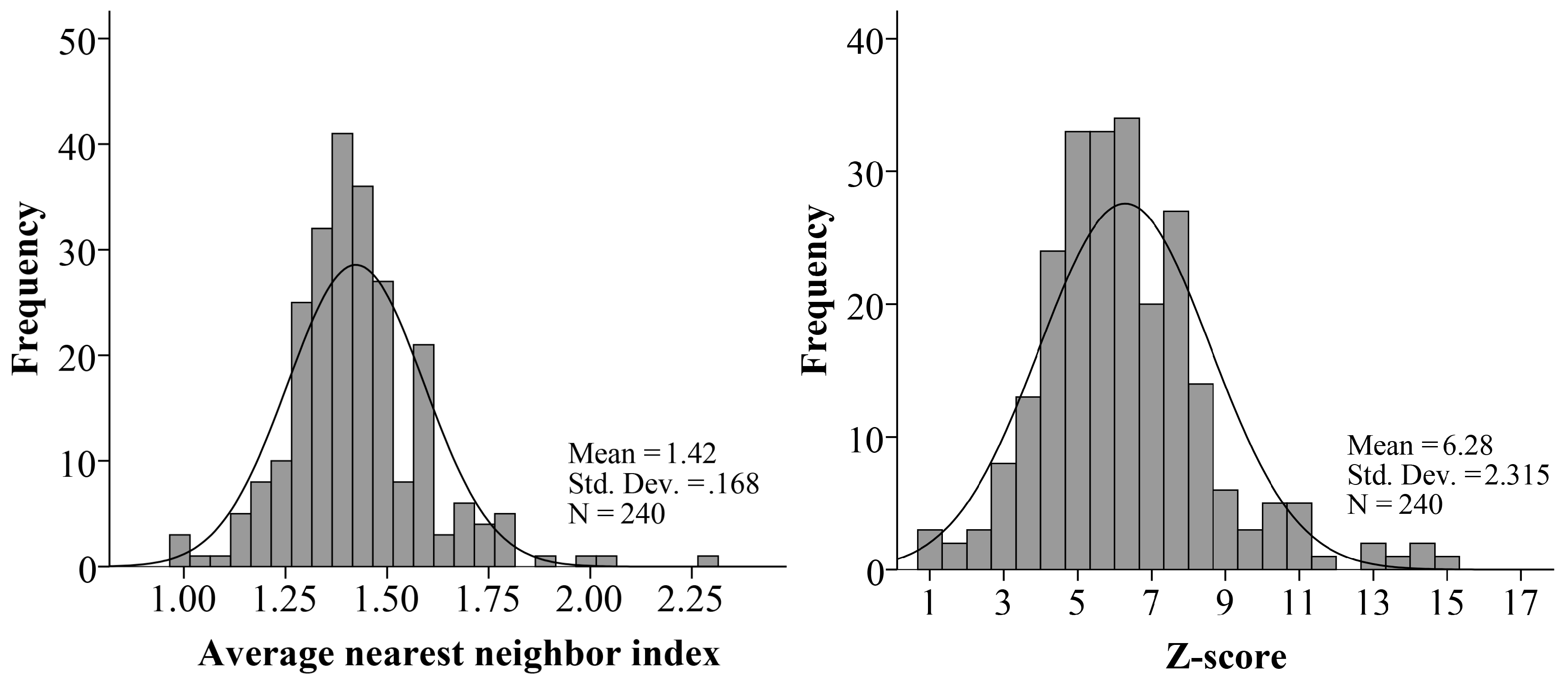
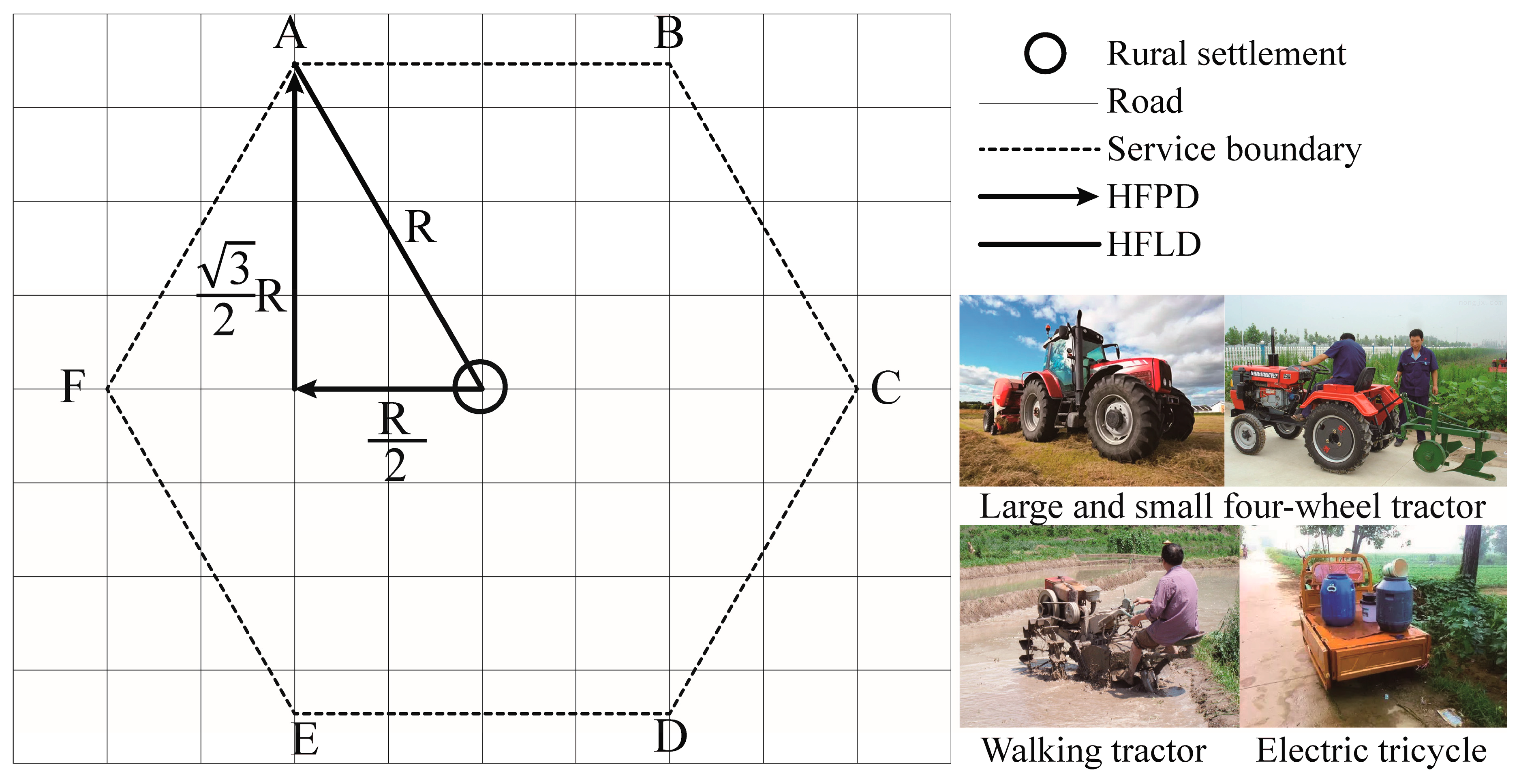
| Plains/Distance | 0–0.5 km | 0.5–1 km | 1–1.5 km | 1.5–2 km | >2 km |
|---|---|---|---|---|---|
| NECP | 45.8% | 34.5% | 12.6% | 4.5% | 2.7% |
| NCP | 74.3% | 22.3% | 3.0% | 0.3% | 0.1% |
| MLPYR | 92.1% | 7.5% | 0.4% | 0.0% | 0.0% |
© 2019 by the authors. Licensee MDPI, Basel, Switzerland. This article is an open access article distributed under the terms and conditions of the Creative Commons Attribution (CC BY) license (http://creativecommons.org/licenses/by/4.0/).
Share and Cite
Li, X.; Liu, Y.; Chen, Y.; Li, P.; Yu, Z. Village Regrouping in the Eastern Plains of China: A Perspective on Home-Field Distance. Sustainability 2019, 11, 1630. https://doi.org/10.3390/su11061630
Li X, Liu Y, Chen Y, Li P, Yu Z. Village Regrouping in the Eastern Plains of China: A Perspective on Home-Field Distance. Sustainability. 2019; 11(6):1630. https://doi.org/10.3390/su11061630
Chicago/Turabian StyleLi, Xuedong, Yunhui Liu, Yajuan Chen, Pengyao Li, and Zhenrong Yu. 2019. "Village Regrouping in the Eastern Plains of China: A Perspective on Home-Field Distance" Sustainability 11, no. 6: 1630. https://doi.org/10.3390/su11061630




